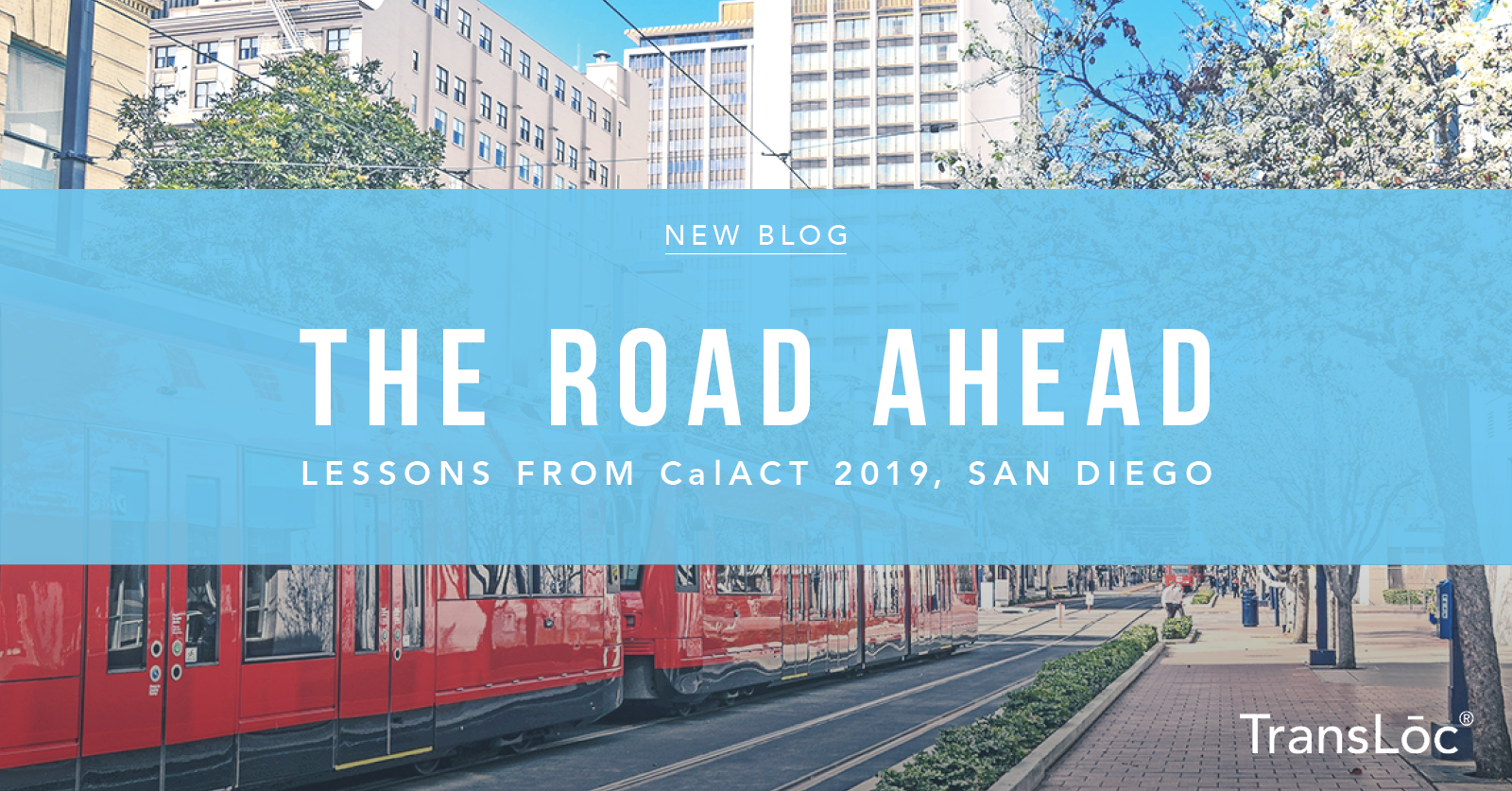
At the end of April, the TransLoc team attended the 35th Annual CalACT conference in Coronado, California. We met with innovative transit agencies looking to improve their systems and create a better tomorrow. While we can’t deliver to you the beautiful birds and beaches of the Pacific, we can bear the gift of knowledge. Here’s what we learned at CalACT 2019:
- Better Together – Jack Johnson wasn’t in attendance, but we didn’t need his catchy tunes to understand this point. Public transit isn’t going anywhere, too many people depend on it. But that doesn’t mean it can’t change. Former US Secretary of Transportation Anthony Foxx touched on this in his keynote address, “You need to be aggressive about planning with other agencies and planning organizations. There is strength in numbers.” He also talked about how cities have the power to invest in the tech they need, which means they have the power to tell the private sector how to shape the future. Together, with public transit agencies’ knowledge of their community and mission to serve everyone, partnered with technology companies bringing in their expertise, we can create a more equitable mobile future for all people.
- Adios, Autos – Personal mobility is evolving. Remember when you were in high school and everybody started getting their driver’s license? Today, only 26 percent of citizens under the age of 18 are opting to get their license. Younger generations are engaging with the world differently, and that has caused us to trend away from the personal automobile. Transit agencies have an opportunity to fill the gap and provide reliable, efficient, and safe transportation as younger generations are saying adios to autos!
- It’s Electric! – It was made abundantly clear that the majority of California agencies understand electric vehicles aren’t just the future, but the present. Forty-two percent of attendees at the Innovative Clean Transit Plenary indicated in a survey that they’ve initiated a Zero Emission Bus project. Transitioning to electric fleets is a long term initiative that will take a lot of time and capital investments. One of those investments is in statewide charging standards and infrastructure. With all of the work that needs to be done to make electric vehicles the norm, agencies need to start now to avoid falling behind the curve. To borrow the Chinese proverb, “The best time to plant a tree was 20 years ago. The second best time is now.”
- It’s all about the Riders – Public transit is a noisy space with frequent advances in technology, new competitors, and the need to answer to many different parties such as city councils and state legislators. Transit agencies exist to serve riders, their most important constituents. Agencies need to clearly understand what riders like and expect from transit providers, i.e. not having to rely on others, not having to pay for or own a car, not having to walk/bike. Keep in mind that riders have a lot of different priorities when it comes to choosing how they get around. They want faster options, a safer experience, an easy way of accessing transit information, and most important of all, flexibility. Riders are no longer enticed by the same old services. It’s up to the transit agencies to consider the riders’ needs and adapt their offerings accordingly.
- Opportunity on Wheels – No matter who you are or where you grow-up, you should be able to pursue your dreams. But many people in our communities are dealt an uphill battle, or are faced with overwhelming systemic challenges. Public transit can create a more equitable world by connecting people to their community, economic opportunities, and essential resources. Freedom is being able to make it to work, appointments, and the grocery store without it taking all day or breaking the bank. When transit agencies work to better their services it can result in increasing social mobility and access to economic opportunities, which brings us closer to empowering all people in our communities.
How can public transit look towards the future with their services? Who are the right people or organizations to partner with? What needs to happen for agencies to become full-on mobility integrators? These were questions being asked at CalACT 2019.
Regardless of size, location, or resources, agencies are looking to play their part in creating a more equitable world. At TransLoc, we want to play our part in revolutionizing transit: the way communities access it, the way communities talk about it, and the way communities embrace it.
It was great connecting with agencies who are Driving Economic Development with Microtransit and are continuously reimagining public transportation for their community. Did you attend CalACT 2019? We’d love to hear from you!